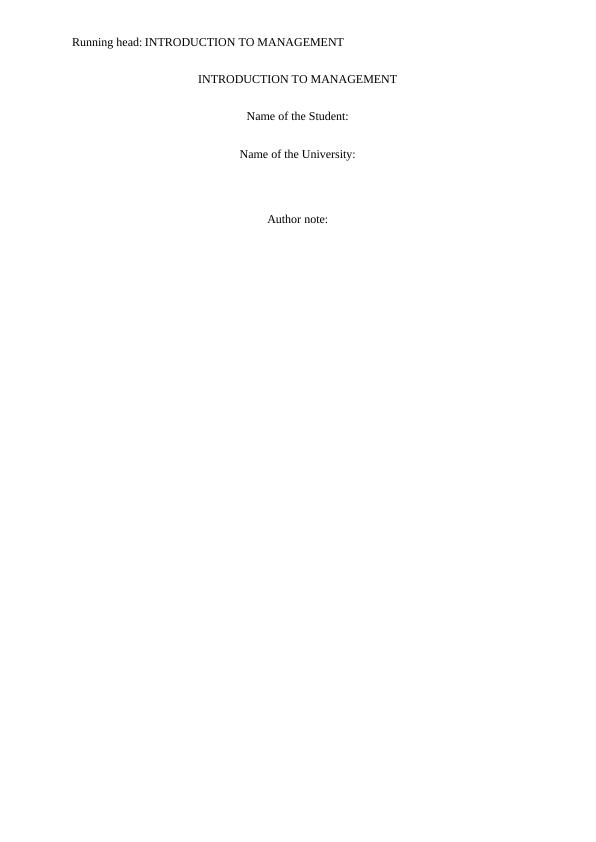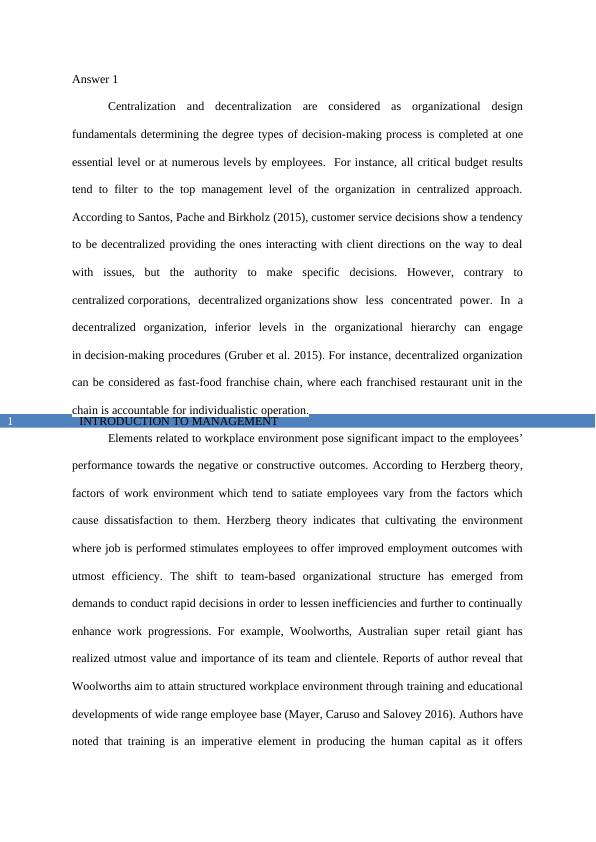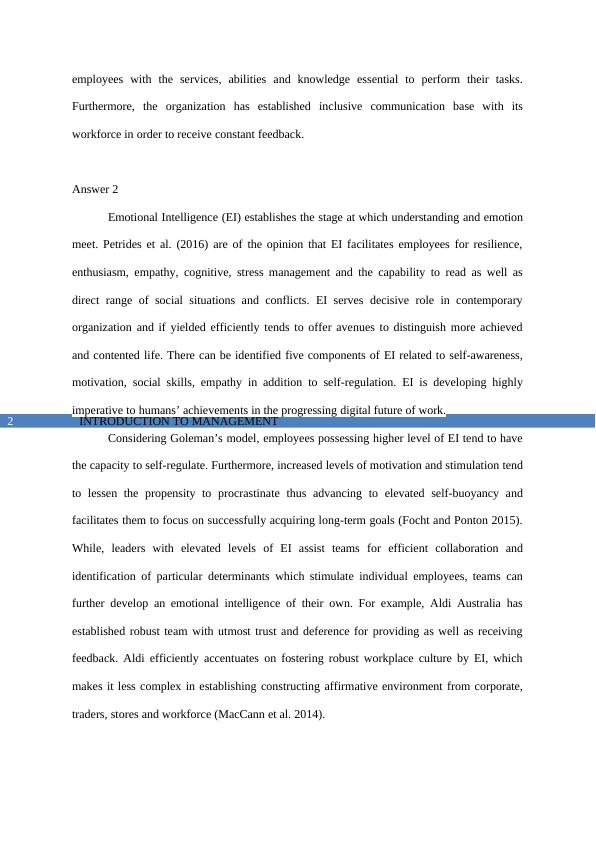Organizational Design Fundamentals and Emotional Intelligence in Contemporary Organizations
Explain one element of organisational design and provide an example of its application in a workplace.
6 Pages1528 Words233 Views
Added on 2022-10-06
About This Document
This document discusses the fundamentals of organizational design, workplace environment, and emotional intelligence in contemporary organizations. It also covers the types of task roles and maintenance group roles in a team.
Organizational Design Fundamentals and Emotional Intelligence in Contemporary Organizations
Explain one element of organisational design and provide an example of its application in a workplace.
Added on 2022-10-06
ShareRelated Documents
End of preview
Want to access all the pages? Upload your documents or become a member.
Developing and Using Emotional Intelligence for Improved Workplace Relationships
|13
|3884
|239
Sustainable Organizational Design Assignment 2022
|11
|2264
|20
Ethics and Governance Assignment 2022
|15
|3781
|20
Quality of Care Measures in Healthcare Settings
|5
|913
|21
Positive Leader | Presentation
|16
|1245
|15
Organizational Culture in Public Sector Organizations in Australia
|5
|1130
|500



